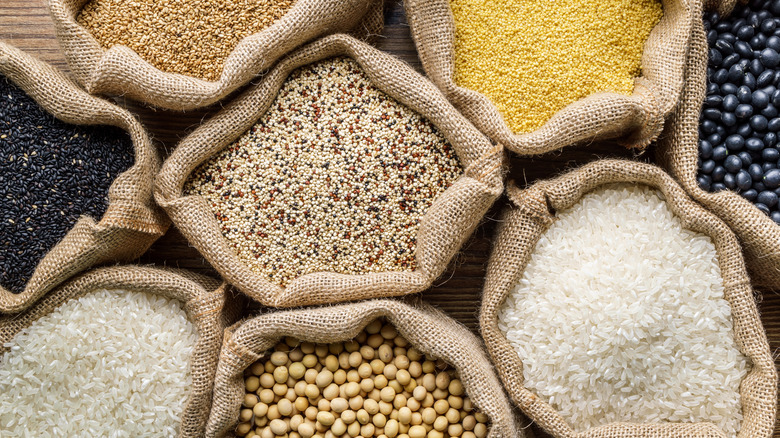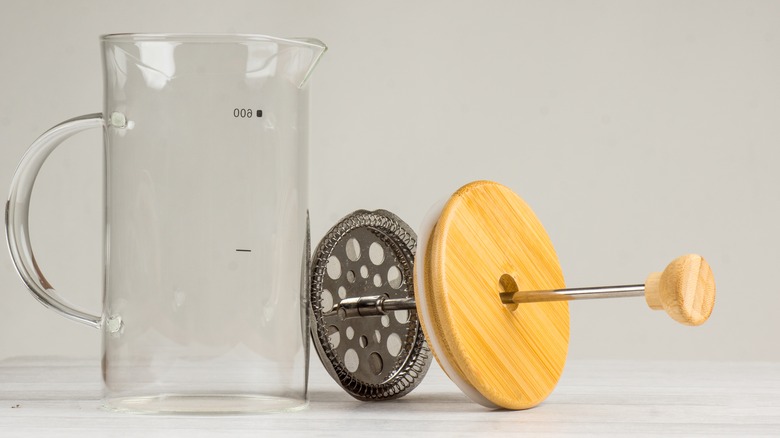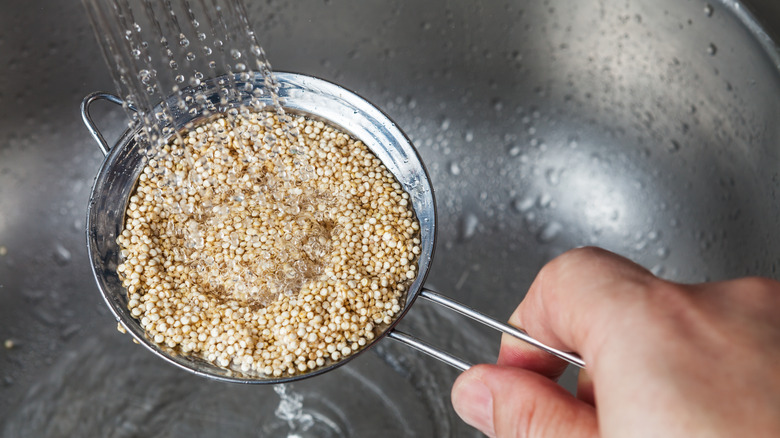The French Press Hack For Easily Straining Grains
The USDA recommends consuming six to 11 servings of grains daily, making the food an essential part of our regular diet. Whether you're whipping up a batch of instant pot quinoa or you've just gotta have your buckwheat breakfast bowl, one essential step in the process of making most grains is rinsing them first. Relying on just your strainer and sieve options, though, you might find that, while they're perfect for draining pasta or homemade stock, they often allow small grains to slip through.
The solution to this problem comes from another part of the kitchen altogether. Head over to your coffee station and you'll find a quick fix in the form of a French press. That's right: Your beloved coffee maker is also the perfect tool for rinsing and straining small amounts of grains and rice. If you think about it, it's really not a stretch of the imagination. After all, if the built-in strainer can sift out fine coffee grounds, it can certainly tackle those much larger grains, too.
How to use a French press to rinse grains
Obviously, the first step here is to match the size of your French press with the amount of grains you're prepping. A single or double serve variety may not be large enough for 2 cups of grains, but it can certainly handle a single serving. Larger devices have room for a larger amount of grains with leftover space for the water, too.
If you've recently made a cup of French press coffee, you'll also want to thoroughly wash it out. Then place your uncooked quinoa, rice, farro, or other grains into the empty canister. Fill it up with water and place the lid loosely on top. Gently swirl the liquid to wash the grains. Then, use the plunger to move the filter up and down through the water a few times before pouring the liquid out.
Repeat this process until the water runs clear. Then remove the lid, dump out the grains, and cook as usual. After a quick rinse, your French press is once again ready for your morning coffee ritual.
Do you really need to rinse grains?
It's likely you've prepared rice at some point without rinsing it first. That may be true for other grains, too. While we've all heard we're supposed to rinse grains, is it really all that important? In short, yes — but sometimes no. While it may not make or break your meal, there are a few reasons why it's important to wash your rice and other grains. The first is to remove any natural coating. For example, quinoa has a natural coating called saponin, which acts as a bug repellent for the plant. Not only do you not need to ingest bug repellents, but the exterior also adds a bitter flavor to the grain, which can affect the final dish.
In the case of rice, another reason not to skip the rinse cycle is because it can result in an overly sticky product. Of course, if you're going for sticky rice, you might want to skip the rinse. Otherwise, this prep step before cooking removes some of the starch, leaving you with fluffier, individual grains once cooked. Furthermore, washing your grains removes icky chemicals and other debris they may have picked up from processing and packaging.


